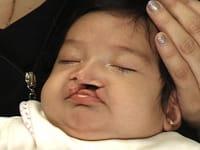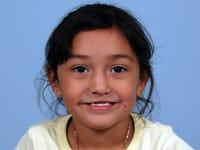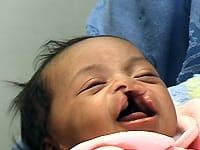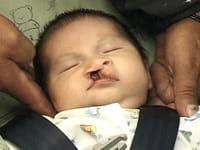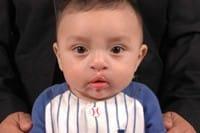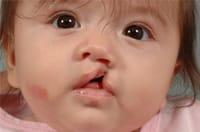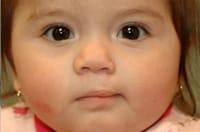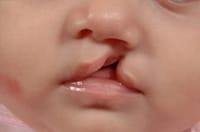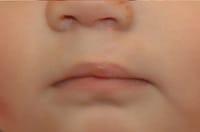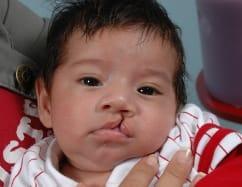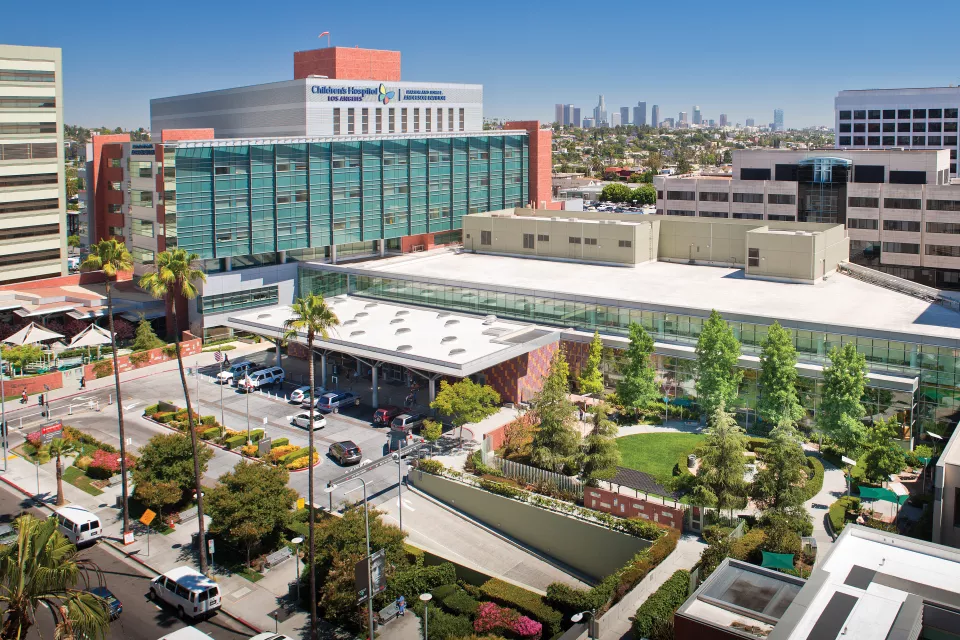Clefts of the lip and palate are one of the most common congenital anomalies in children. They occur in approximately one in 700 births.
Cleft lip and palate result from the incomplete closure of the upper lip and roof of the mouth. This causes a gap or defect to occur in the affected area, involving skin, muscle and the lining of the mouth. There is often an associated deformity of the nose on the affected side.
A cleft lip can be on one side (unilateral) or both sides (bilateral) of the upper lip. Cleft lip can occur alone, or can occur with a cleft palate. Similarly, a cleft palate may occur in isolation, without a corresponding deformity of the upper lip.
Types of Cleft Lip
- Forme fruste unilateral cleft lip
A subtle cleft on one side of the upper lip, which may appear as a small indentation. - Incomplete unilateral cleft lip
A cleft on one side of the upper lip, which does not extend into the nose. - Complete unilateral cleft lip
A cleft on one side of the upper lip, which extends into the nose. - Incomplete bilateral cleft lip
Clefts on both sides of the upper lip, not extending to the nose. - Complete bilateral cleft lip
Clefts on both sides of the upper lip, extending into the nose.
Types of Cleft Palate
- Incomplete cleft palate
A cleft in the back of the mouth in the soft palate. - Complete cleft palate
A cleft affecting the hard and soft parts of the palate. The mouth and nose cavities are exposed to each other. - Submucous cleft palate
A cleft involving the hard and/or soft palate, covered by the mucous membrane lining the roof of the mouth. May be difficult to visualize.
Causes of Cleft Lip
Various family and environmental factors may contribute to a child's cleft. In the majority of new patients we see, there is no family history of clefts.
Most infants with cleft lip or palate are healthy children who have no other birth anomalies. However, children with clefts may sometimes have other medical problems.
A geneticist examines all infants in our Craniofacial and Cleft Program and discusses the chances of having another infant with a cleft with each family as a part of the treatment process.
One of our innovative studies is our early cleft lip and repair protocol. This gives families the option to have their child’s cleft lip repaired as early as two weeks of life. We are the only institution in the United States that offers this. Learn more here.
Health Problems Related to Cleft Lip and Palate
Feeding
Feeding difficulties may occur in newborns with cleft lip and/or palate as the normal anatomy of the mouth is disrupted. Each baby is different in their ability to feed. In the presence of a cleft lip, the child may be unable to form a seal around the nipple of a bottle. Children with cleft palates have difficulty in generating suction because of the opening between the mouth and the nose.
During your child's first clinic visit, the baby will have a feeding assessment with the occupational therapist present, who will provide information and demonstrate how to feed the baby.
Tooth Development
A cleft lip and/or palate can affect the development of teeth. The type of cleft the child has will have an impact on how the teeth will be affected. Missing teeth, small teeth, extra teeth and crooked teeth are common. Regular dental care is important for healthy teeth and gums.
Orthodontics
A baby with a cleft lip and palate may have the upper jaw divided into two or three parts separated by wide gaps. Orthodontic treatment for a child with cleft lip and palate could start as early as a few days old, depending on the child’s type of cleft. A custom-fitted orthodontic appliance is used to bring the parts of the upper jaw, lips and nose closer together and in a better position. This is called Nasoalveolar Molding (NAM). Not all infants will need this treatment. The orthodontist at Children's Hospital Los Angeles will direct fitting of the appliance. Most children with cleft lip and palate will have problems with the alignment of the teeth and jaws. The orthodontist can correct this problem with regular treatments starting at age seven for some children.
Hearing
Proper hearing is important for normal speech development. In children with clefts involving the soft palate, the middle ear may be affected. This occurs when the eustachian tube, which connects the middle ear with the back of the throat, does not function properly. This structure allows fluid to drain from the middle ear into the back of the throat. When its function is compromised, fluid may build up in the middle ear, interfering with hearing. The child may develop a temporary hearing loss. This fluid can also get infected and ear infections may be frequent. For this reason, many children have tubes inserted into the eardrum to drain the fluid. This results in improved hearing and fewer ear infections.
Speech
Children with unrepaired cleft palates will have speech difficulties. Normal speech is the goal of surgery. Many children will require speech therapy after the operation, and some may need a second procedure if speech difficulties persist. The speech therapist will regularly assess speech development and will arrange for speech therapy in the community if necessary.
Social and Emotional Impacts
There can be a considerable social and emotional toll associated with having a child with cleft lip and/or palate. The infant’s appearance, feeding difficulties, frequent trips to the doctor and surgeries can be quite stressful. This may, in turn, have an impact on the adaptation process of both child and parents.
Cleft Lip and Palate Treatment
Cleft lip, and especially cleft lip and palate, are associated with sucking and swallowing difficulties. Affected infants need to be followed closely to ensure adequate weight gain. Multiple ear infections, often with resulting hearing loss, are not uncommon, and the presence of fever needs to be evaluated for possible inflammation of the middle ear. Difficulty with speech articulation is common and may necessitate speech therapy.
The goal of surgical repair of cleft lips is to restore the normal appearance and muscular anatomy of the upper lip. At our institution, this is done typically between three and six months of age. Cleft palate repair proceeds at approximately 10 to 12 months of age. The goal is to close the gap between the mouth and nose, in addition to restoring the muscular function of the soft palate. The initial cleft lip repair is often combined with placement of ear tubes by the otolaryngologist. The child is monitored closely following repair of the palate to determine whether additional assistance is warranted for the proper development of speech and hearing.
Since each child's cleft is unique, different surgical techniques may be used to repair the cleft. Also, secondary procedures may be required to correct speech, fill in the bony gap between the teeth, improve the relationship of the upper jaw to the lower jaw or refine the appearance of the nose. Your plastic surgeon will discuss the surgeries that will be performed on your child at each stage with you.
Cleft Lip and Palate Before and After Photos
These photos depict patients before and after receiving treatment for cleft palate and/or cleft lip.
Before and After
